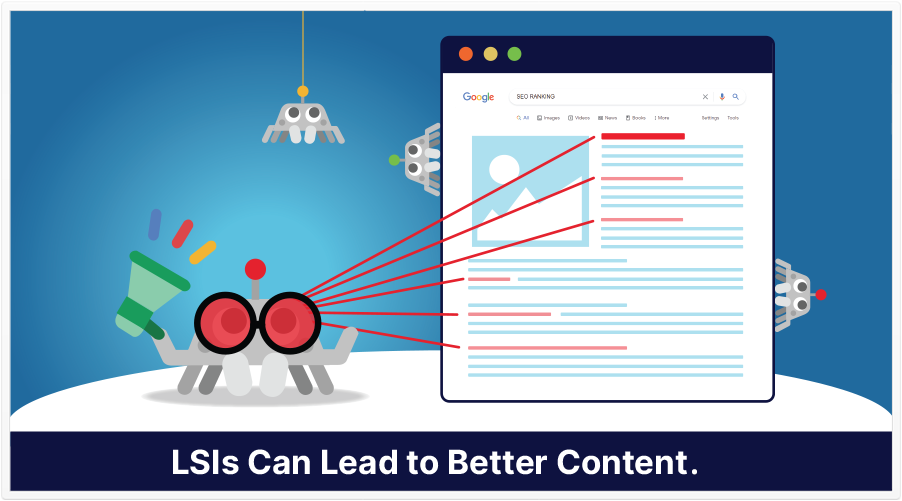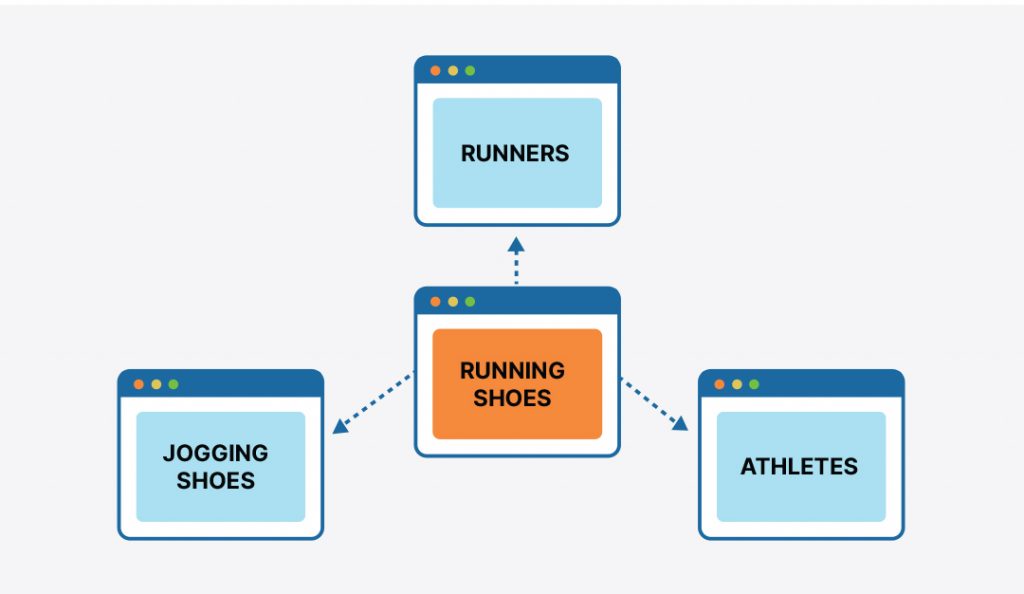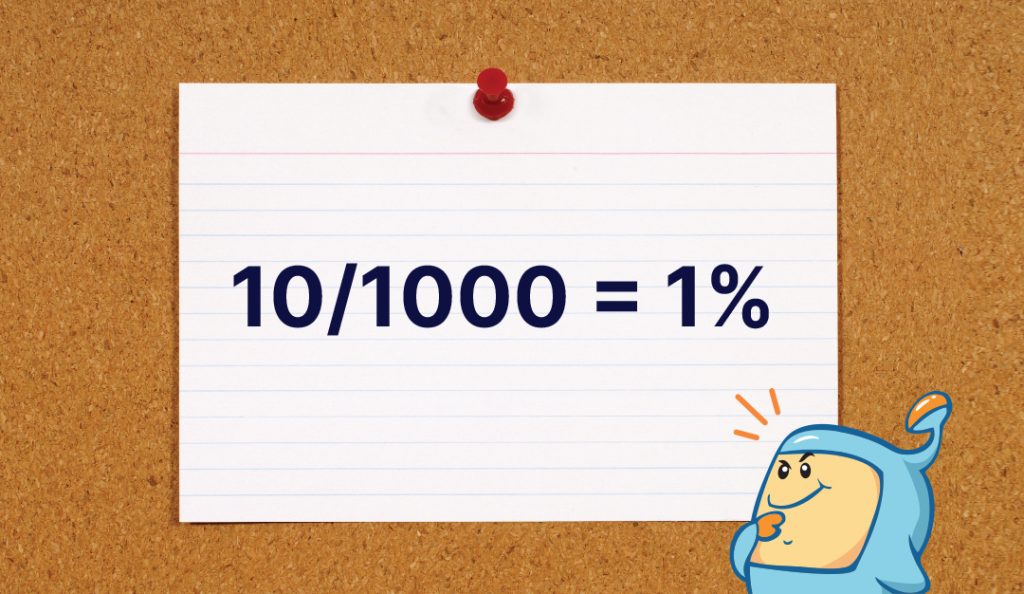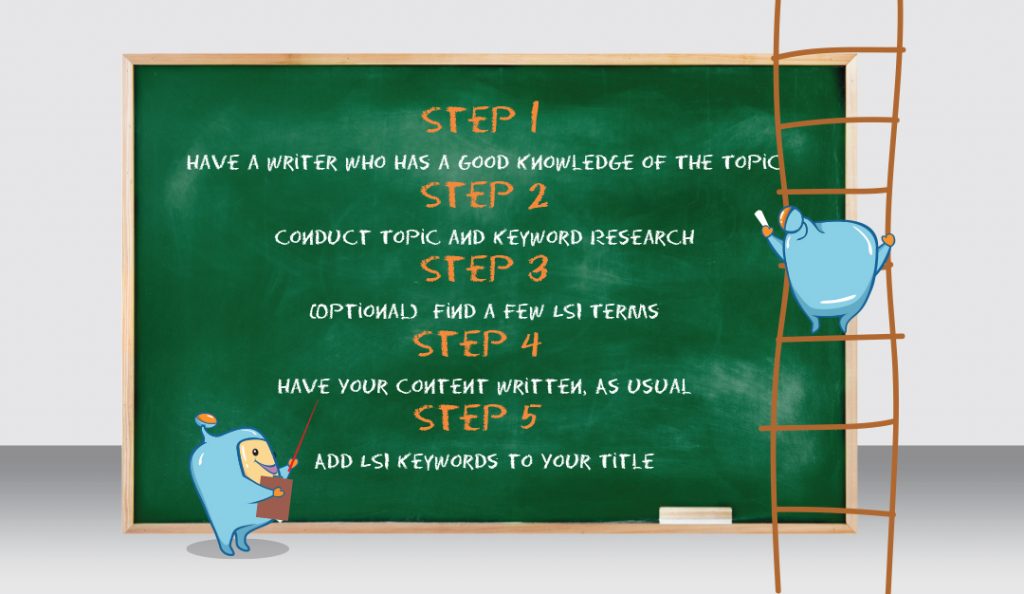
Latent Semantic Indexing or LSI keywords are gaining more popularity recently and more and more people are adding LSI to their content in order to rank. What is LSI? Is it a ranking factor? Do you really need it? In this article, we talk all about LSI, what it is, it’s importance, some tests done by the SIA on LSI and their results, plus a 5-step LSI keyword strategy for creating better content for SEO and to help you increase your rank.
Before we get into this, I think the best piece of advice I can give you is a bit of an oversimplification: don’t get too hung up on LSI. If you have and do these 2 things, you’ll cover a lot of what LSI demands:
LSI is just naturally using terms that are associated with the topic you’re writing about. If your writer has knowledge on that topic, and just writes naturally, chances are they’ll use LSI terms in the article.
You probably know what keywords are: from an SEO perspective, they’re the search queries or search terms that searchers type into a search engine.

LSI is an acronym for latent semantic indexing (also termed as Latent Semantic Analysis). It is a computer program that is programmed to learn a wide variety of synonyms based on context. The program uses mathematical techniques in order to find the relationship between words and concept within a piece of content.
In terms of SEO, LSI keywords are terms that are related to each other and that naturally come up in a conversation about a topic that search engines use in order to understand the content of a page or site. Search engines are not like humans that can understand a content by reading it and comprehending it. Search algorithms such as Google’s algorithm have evolved from the days when they just rely on how many times a keyword is used and take that as an indication of the topic of the content. Nowadays, search engines such as Google search, understand a content with the use of entities and LSI. A lot of people confuse LSI as variations or synonyms of a keyword, some even call it long-tail keywords. However, keyword variations, related keywords, synonyms, long-tail keywords are not LSI keywords.
In layman’s terms, LSI says that if there’s a web page on a given topic (say, running shoes), then if that web page is comprehensive enough, there are other related words and phrases that will be on that web page. LSI are the other words in a conversation that gives more content or meaning to the topic.
The best way I can illustrate latent semantic analysis is to probably use an example: what terms, or semantic keywords, would we find on a web page that talks about running shoes?
How about the terms jogging shoes, athletes, runners, and popular brand names?
In the above case, the term running shoes would be the core keyword, with the surrounding, related ones being semantic keywords.
Likewise, a web page on the topic of jogging shoes might also have similar semantic keywords on it.
Search engine optimization experts do everything they can to optimize as many web pages as necessary to make those pages favorable to the search engine algorithms. The hope is to get as much organic traffic as possible.
(Granted, we don’t know what the actual search algorithms are, but we do have a good guess about what many of the determining variables are.)
Good SEO strategy involves creating content that’s comprehensive, and part of that strategy includes:
If I had to state the importance of main and semantic keywords, I’d say one word is comprehensiveness.
With the advanced AI of search engine algorithms, it’s given that, as I mentioned earlier, a document about jogging shoes would also mention semantically-
relevant keywords, such as joggers.

Ah, yes…keyword density.
This term can basically be defined as a percentage of the number of times that a given search term occurs on a web page, compared to the total number of words on a page.
So, going back to our example, if the term jogging shoes occurs 10 times in a 1,000-word document, you could say that the document, or web page, has a 1% keyword density for the term, jogging shoes.
With that, understand that the search engines have AI and natural language processing. That means that they can understand what a piece of content is about, mostly without the writer having to do any keyword stuffing. Keyword stuffing is usually frowned upon, and I bring it up here because I’ve seen some webmasters, in an effort to reach a certain keyword density, stuff keywords into their content in an artificial way that causes grammatical errors.
You don’t want to cause grammatical errors just so that you can hit a certain keyword density. In the SEO community, we know that when it comes to creating SEO-friendly content, keyword stuffing is an SEO myth from the early days of SEO.
Let me put it this way: LSI or semantic keywords are to articles what articles are to a content strategy.
By that, I mean that, just as a good article has naturally-occurring semantic keywords, a good content strategy has a lot of articles (and other forms of content).
But that doesn’t mean that you can’t consider LSI keywords when you’re planning your content strategy. Indeed, do that if you can. It’s just that for me, SEO tools, primary keyword ideas, and long-tail keywords are used at the planning stages of a content strategy.
On the other hand, when it comes to creating good, quality pieces of content, individual high-ranking pages are said to have lots of LSI terms. These individual pages can be articles, pdf studies, videos, etc.

If you’re knowledgeable about your subject area, do your keyword research, and have a list of keywords, then you’re pretty much ready to write your blog post.
I say that because you probably know most of the semantic terms that would be mentioned when experts talk about your subject.
That said, if you want to go above and beyond and give your content the best chance of ranking in the search engines, some keyword generators can generate hundreds of related long-tail keyword terms.
A lot of these will be slight variations of your seed keyword. But, those variations can spark ideas that will be LSI terms.
There are also various tools and techniques that you could use to find LSI keywords for your particular keyword. Examples of these are Google Autocomplete, Google Keyword Planner, Google Related Searches, just going through the search results, and SEO tools such as Ntopic, LSI Graph, and Ubersuggest, among others. There are a lot of free LSI Keyword Generator available online.
In the SIA, we did a couple of tests on LSI to see if it is a ranking factor and if you really need to add LSI to your content, and to see if LSI can beat having your keywords in the content – if you can rank content by just using LSI. Here are the tests and their results.
As early as September 2016, the SIA has already tested LSI. In test #57, the SIA tested if LSI is a ranking factor. In this test, 2 pages were set up with 500 words and a keyword density of 2%, using the same keyword and meta title, and identically optimized for the target keyword, with the only difference of the experiment page including LSI with an Ntopic LSI score of 80.93%.
2 pages with 500 words and a 2% keyword density, same keyword and meta title used on each page – both pages were identically optimized for the target keyword. The Experiment Page included LSI and nTopic’s LSI score was 80.93%. The Control Page had the LSI replaced with random English words in the exact place that the LSI was placed on the experiment page. For comparison, the Control Page’s nTopic score was 36%.
In this test, the page with the LSI wins, showing that LSI was a ranking factor, contrary to what people though during that time in 2016.
As the initial SIA test on LSI that showed it was a ranking factor was in 2016, we tested it again in July 2018, to see if it was still a ranking factor or if there were any changes that occurred during the last 2 years. The SIA used an updated and much better test methodology. LSI also continues to be a controversial topic in the SEO community which is why it was tested again.
In this test, it was again found the LSI still continues to be a ranking factor and the test page with LSI jumped to the number 1 spot.
In this test by the SIA, it was tested which will rank better, a content that has low keyword density and with more LSI, or a page using the target keyword in the content with no LSI. This is based on the myth that a page with LSI keywords will outrank a page with higher keyword density and is based on the observation that ranking pages are not repeating the keyword multiple times in the body. The idea is that Google is getting smarter and is looking for content on pages that matches the search intent and not based on keyword placement.
In this test, the page that uses the target keyword (7 times) beats the page that uses the keyword 1 time and then uses LSI keywords. However, this test was done in 2016 and changes could have happened during the 5 year period. This test is for retest.
Want to know recent results from SIA testing? Join the SIA at https://seointel.com/
From the tests done by the SIA, you can see the importance of using LSI in your content and how using it can help you with rank. Next section is a guide on how to implement LSI to help you get ranked.

Does your writer have to be an “expert” on the subject, or article topic?
No, not necessarily. But they should know enough to have a conversation, and they should probably know a bit more about the topic than the reader is (which…makes sense).
They may not be a “topical authority” as such, but maybe they will be…after they do the next step.
Why do research if you’re already familiar with the topic?
Well, depending on how specific your focus keyword is, you (or your writer) may wish to refine your knowledge. Research doesn’t have to take a long time: for an exceptionally knowledgeable writer, even a minimal amount can be sufficient.
And when it comes to keyword research, you can basically do the following:
Isn’t it interesting that, for an article talking about LSI, the step having to do with LSI is an optional one?
That’s because, in my opinion, if your writer has a good understanding of the topic, and they further that with research on a target keyword, they’ll naturally incorporate relevant terms (some of which will be LSI terms) into the article.
Remember, LSI terms are just terms that would naturally occur in a comprehensive document (or discussion) about a certain topic.
However, if you would like to have an article that has a better chance in ranking in Google and is more targeted towards what Google understands as contextual topics that should be together, then use a tool to be able to see what those topics and words are that needs to be used in your content. Recently, there have been a lot of content optimization tools that have been coming out that make use of optimizing your content based on entities and LSI. You could use these tools to help you optimize your content. Some examples of these tools are Frase, Surfer, Inlinks, Cognitive SEO, among others.
Using your topic research and keyword research, you should be able to write content that is SEO optimized. Write it out naturally and write content that is very comprehensive on the topic. Doing so would help you naturally use LSI terms. And for that added boost, check it against the SEO content optimization tools I have mentioned earlier and make adjustments as necessary.
While your target keyword is more important when it comes to having it in the content, you can also opt to add it in your Title and in your htags. Remember though that as we’ve tested and proven in the SIA, having your keywords in the Title, Htags, and content is still important and are still places that Google crawlers look to when it comes to the main topic of your content. If you could, add LSI. Another option is using LSI in meta tags such as the meta title tag, meta description, etc.

I hope that with this article, I was able to explain more about LSI, its importance, and how you could start applying to your pages and start seeing some ranking improvements.
LSI is just one part of optimizing your content for search. There are a lot of factors that search engines such as Google rely on when it comes to reading and understanding content, and ranking it. Check out our on page seo guides for more details on how to optimize your page and make it search engine friendly. Better yet, join the SIA for tested SIA data that has been proven to get you ranked.
